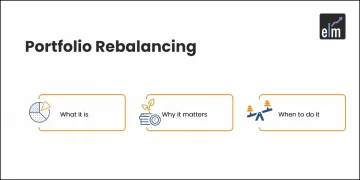How do you effectively diversify your portfolio? Well, you need to understand the mix of asset classes you want to put into it. Consequently, you need to understand the correlation between those asset classes to get the perfect mix.
Portfolio Diversification refers to the spreading of our investment funds in various assets for reducing overall risk. The modern portfolio theorist recommends that an investor should measure the correlation coefficients between the various assets’ returns for strategically selecting those which are less likely to lose value at the same time. That means we need to determine whether that the prices of the assets tend to move in the same direction or the opposite directions in response to macroeconomic trends
Sounding too heavy for a weekend read? Don’t worry! We’ll break this one down in simple language for you to ace your portfolio mix:
What does Portfolio Diversification mean?
“Don’t keep all your eggs in the same basket”- This quote fits perfectly when we talk about portfolio diversification. Diversification is all about spreading investment risks in different asset classes. We all know that at a particular point, not all our funds perform the same.
Diversification can save us from the reduction in our portfolio returns. When our portfolio is well diversified then our returns remain in line with our expectations. When one asset goes down then the other remains stable or may go up also. This is how we can reduce our overall investment risk.
Here are some facts related to portfolio diversification:
- When doing portfolio diversification, one should not invest in the companies of the same sector as this can lead to sectoral risks
- One should not have a portfolio that has too much weight on small or mid-cap companies. This is considered to be risky as they are vulnerable to market shocks and surprises.
- One should not invest in companies of different market capitalization as this will lead to investing in a single asset class i.e. equity.
- One should not invest in assets having a positive correlation.
- Rather than having 10-15 mutual funds in our portfolio, one should have fewer funds with different portfolio compositions for preventing overlapping of funds.
Well, having read these pointers related to portfolio diversification, let us understand what correlation means and how is it connected to portfolio diversification:
What does Correlation mean?
Correlation refers to the movement of returns of two or more assets in a specific direction. It mainly indicates the relationship between different asset classes like bonds, equity, currencies, commodities etc. in a portfolio. The two asset classes can be negatively, positively related or there can be no correlation between them
Correlation is usually measured on a scale of -1.0 to +1.0:
- So, if two assets have a correlation of 1.0, that means they are perfectly correlated. Thus, we can say that if one gains 5%, then the other gains 5%. If one drops 5%, so does the other.
- A negative correlation of -1 means that one asset’s gain results in another asset’s loss.
- A zero correlation indicates that there is no predictive relationship between the two assets.
Having understood the above, let’s move on to understanding how the correlation between two assets can help us in effectively diversifying our portfolio:
What is the Interconnection between Correlation and Portfolio Diversification?
In order to reduce our portfolio risk, we need to make a well-diversified portfolio. We need to understand the correlation between two assets and invest in those investments which are not correlated with each other or negatively correlated.
Let us discuss the relationships between different assets classes of the Indian financial markets:
1. Dollar Index and Equity
The dollar index and the Indian Stock Markets are negatively correlated. The reason behind this is that when the dollar index falls, FIIs (Foreign Institutional Investors) invest more in Indian stocks as they get higher returns as compared to returns from dollars.
If you look at the monthly chart above it shows that both the NIFTY 50 index and USD movements are inversely correlated.
2. Bonds and Equity
The US bond yields and the Indian Stock Markets are also negatively correlated. When the yields increase then it also indicates that the Fed might raise interest rates for controlling inflation.
Due to this reason, many FIIs and global investors may pull out their money from Indian Stock Markets and invest in these bonds.
3. Crude Oil and Equity
We can see from the below chart also that crude oil and equity are negatively correlated. The reason behind this is that the Indian oil industry is a major importer of oil. Thus, industries like tyre, logistics, refinery, airlines, lubricants, paints, etc are affected by a change in oil prices directly.
Watch our webinar on A to Z of Profitable Crude Oil Trading
4. Gold and Equity
In general, gold and stock correlation are negative which means when the gold price goes up, prices in the stock market will fall. It has been observed that when the stock market is most pessimistic, then gold performs very well. This can be seen from the chart below as well:
As now we know how the different asset classes are correlated to each other, we can diversify our portfolio accordingly. One should note that the lesser correlation between the assets, the higher the diversification is achieved.
You can also do our course on INVESTMENT ANALYSIS & PORTFOLIO MANAGEMENT
Bottomline
Diversification of the portfolio is as important as the selection of asset classes for investing. One should remember that rather than investing in the asset classes having positive correlation, one should invest in those asset classes that have no correlation or are negatively correlated. I hope that you found this blog informative and use the information to its max potential in the practical world. Show some love by sharing this blog with your family and friends and help us in our mission of spreading financial literacy.
For stock related queries visit web.stockedge.com
Happy Investing!






